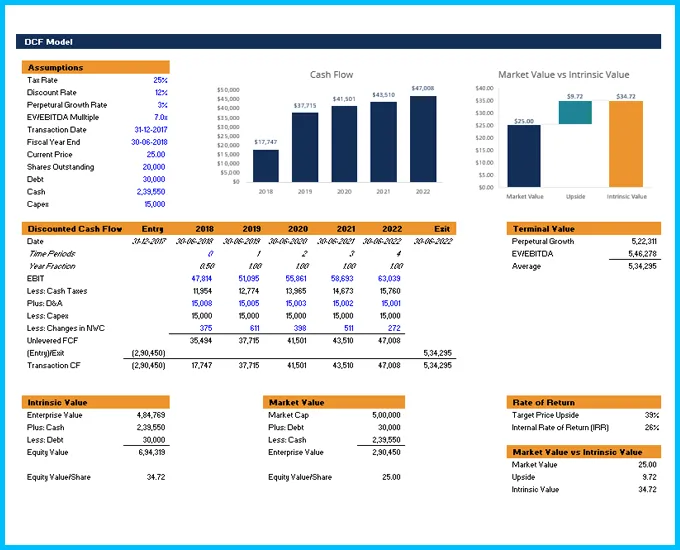
This DCF model template provides you with a foundation to build your own discounted cash flow model with different assumptions.
The first step in the DCF model process is to build a forecast of the three financial statements, based on assumptions about how the business will perform in the future. On average, this forecast typically goes out about 5 years. The forecast has to build up to unlevered free cash flow (free cash flow to the firm or FCFF).
We continue walking through the DCF model steps with calculating the terminal value. There are two approaches to calculating a terminal value: perpetual growth rate and exit multiple.
In step 3 of this DCF walk through it’s time to discount the forecast period (from step 1) and the terminal value (from step 2) back to the present value using a discount rate. The discount rate used is typically the company’s weighted average cost of capital (WACC).
The best way to calculate the present value in Excel is with the XNPV function, which can account for unevenly spaced out cash flows (which are very common).
Credits to : Corporate Finance Institute